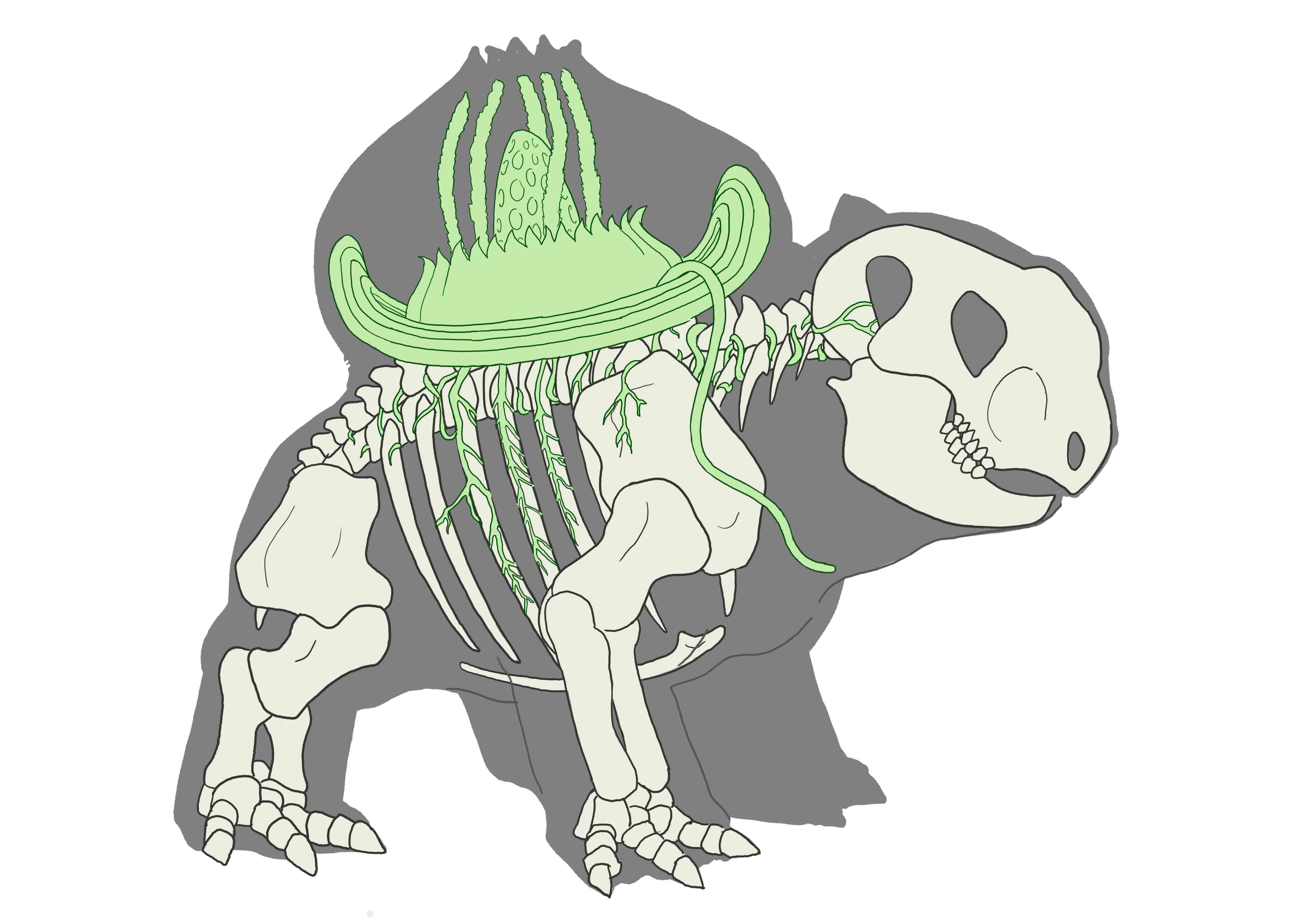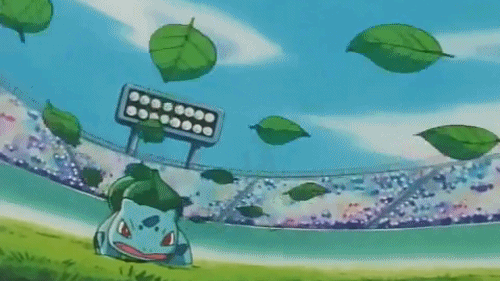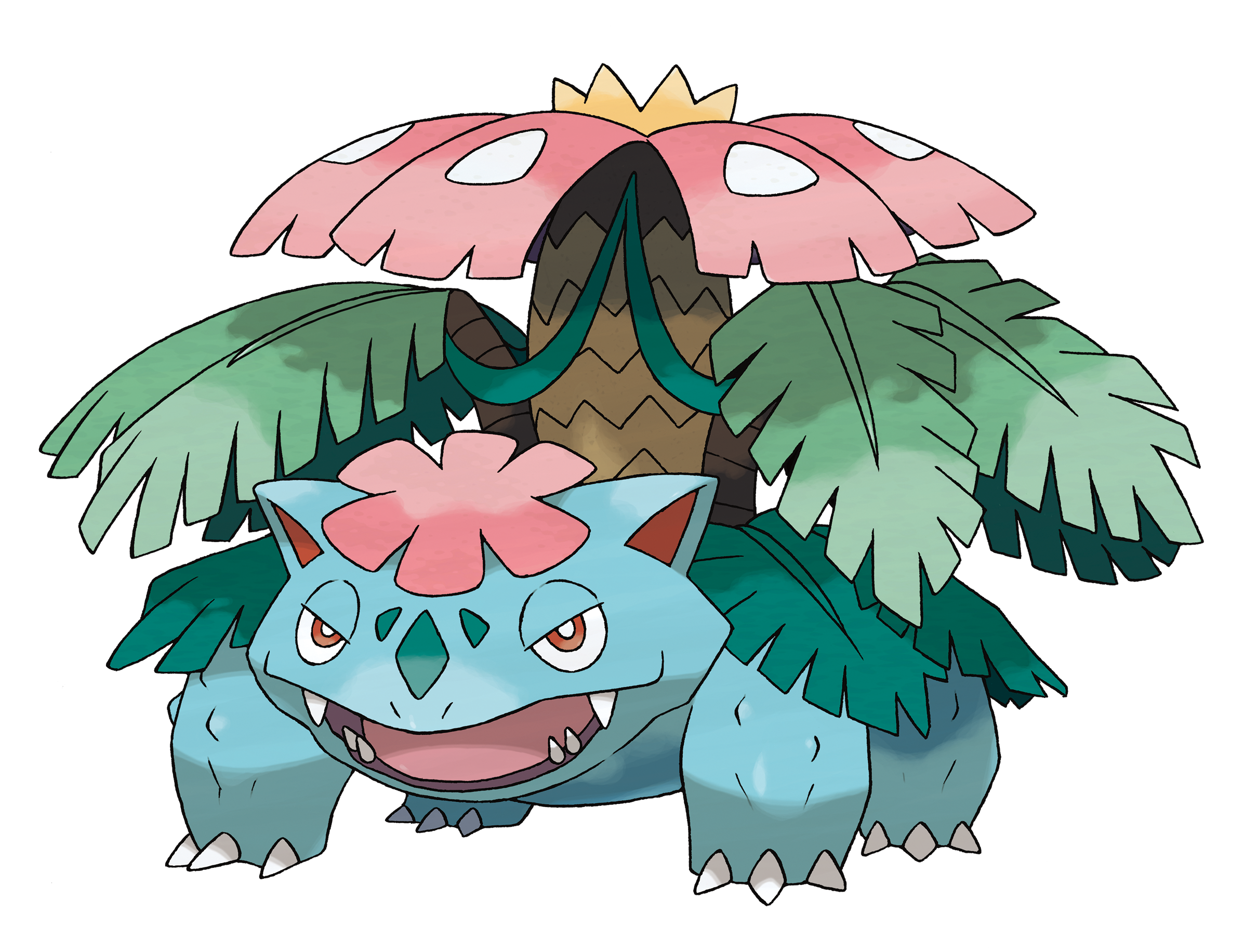The reproductive methods of Pokémon are different in a number of ways from most known means of animal, plant, and fungus reproduction. Unlike most Earth species, which engage in sexual reproduction, most Pokémon engage in a process of procreation which can be termed "romantic reproduction". In other words: rather than reproducing through a sexual process, most Pokémon reproduce as a result of love.
Though some arthropodal, ichthyic, avian, or otherwise non-mammalian Pokémon do breed oviparously, in general, Pokémon birth viviparously or ovoviviparously. An important point however on the topic of Pokémon live birth versus eggs is a differentiation between wild and tame Pokémon. All known Pokémon are seemingly oviparous (or perhaps a sort of unique "vivioviparous": or reversed ovoviviparity, wherein the offspring are carried in a viviparous manner until birth, when they are encased in an egg and born essentially oviparously). However, it is implied by the Pokémon Mansion journals that at least some Pokémon are purely viviparous.
As far as can be determined, all known Pokémon reproduce asexually, through a form of romantic haplodiploidic parthenogenesis. Biological gender (distinct from sex: Pokémon do not possess genitalia) is determined by the development either of an unfertilized haploid gamete (which results in a masculine embryo), or the fertilization of a diploid zygote via the mutual union of a pair of haploids (which results in a feminine embryo). Unlike sexual reproduction, it is a form of romantic reproduction: wherein the process of procreation is originated solely in the mother, when she is subjected to sufficient romantic pheromones (not identical, but quite similar, to sex pheromones) from her chosen mate (though the mate, and thus its pheromones, must be masculine in order for conception to occur in the female), as well as heightened levels of oxytocin in her own brain (associated with romantic love for the mate). All-feminine species reproduce through parthenogenesis.
All-masculine species are more complex: all known all-masculine Pokémon are entirely domesticated, and can be bred only with the assistance of Ditto or counterpart all-feminine morphs of the same species (Tauros and Miltank, Braviary and Mandibuzz, etc.). Some of these, such as Tauros and Miltank, cannot be bred by ordinary trainers, and only licensed breeders, farmers, etc., are permitted to breed them; Braviary and Mandibuzz present a similar case, as endangered, protected species. Some, such as Tyrogue, originally possessed a feminine morph in the wild, but after being domesticated and bred for masculinity and battle instincts, they no longer mate without the assistance of Ditto (though theoretically some may have active "female" reproductive systems: they fail to breed only because they are so combative that they do not easily form loving bonds between members of their own species). It is possible that all Pokémon—male, female, and non-binary genders—possess potentially functional and identical reproductive systems: the feminine are simply more suited to actually producing and raising offspring.
However, there are distinct changes in the reproductive behaviors of Pokémon in captivity, as opposed to the wild. Typically, in the wild, Pokémon reproduce only by forming a mating bond with a member of their own species, of the opposite gender (though homoromantic mating bonds have been documented). However, in captivity, Pokémon very often form mating bonds and procreate with any other Pokémon of the opposite gender which is of the same Egg Group (or reproductive grouping; generally confined to similar types or habitats), if they are confined together (Pokémon Day Care and similar facilities frequently report inter-species mating bonds producing eggs).
An intriguing aspect of this process is that all known Pokémon produce eggs when breeding in captivity (specifically confined areas, such as the Pokémon Day Care), even species which are ordinarily viviparous. However, in cases in which naturally viviparous species produce eggs in captivity, the "eggs" can be considered more similar to a "cradle" of sorts: a natural defense. When kept in close quarters, the biological process of reproduction in many Pokémon is altered slightly: as a primitive defense mechanism to protect their newborns, an atavistic physiological change causes an egg-like shell to develop around the fetus inside the uterus. This is useful as a biological process, since it allows protects the mother as well as the offspring: the excess materials (afterbirth) associated with gestation are safely expelled from the mother, inside of the egg. In the wild, viviparous Pokémon, without having the egg as a means to expel the placenta from the womb, generally engage in ordinary viviparous afterbirth, and ultimately consume the placenta for the benefit of prostaglandin (as is common in most species of placental mammals).
All known Pokémon which have been documented as breeding "vivioviparously" (in the manner described above) do so in single births; there are no recorded instances of multiple births in captivity. This is likely due to the unusual nature of the process which leads to the development of the egg: only a single fetus is able to be properly encased in the egg, and thus any multiple births would result in miscarriage.
However, though all Pokémon reproduce (whatever the method), some develop anti-reproductive behaviors when in captivity, or when exposed to excessive human influence. For example, Nidoran and its mature stages are capable of breeding in the wild, however female members of the species (Nidorina and Nidoqueen) develop staunchly anti-procreative behaviors in captivity, and refuse to mate (regardless of their mating partner).
Though some arthropodal, ichthyic, avian, or otherwise non-mammalian Pokémon do breed oviparously, in general, Pokémon birth viviparously or ovoviviparously. An important point however on the topic of Pokémon live birth versus eggs is a differentiation between wild and tame Pokémon. All known Pokémon are seemingly oviparous (or perhaps a sort of unique "vivioviparous": or reversed ovoviviparity, wherein the offspring are carried in a viviparous manner until birth, when they are encased in an egg and born essentially oviparously). However, it is implied by the Pokémon Mansion journals that at least some Pokémon are purely viviparous.
As far as can be determined, all known Pokémon reproduce asexually, through a form of romantic haplodiploidic parthenogenesis. Biological gender (distinct from sex: Pokémon do not possess genitalia) is determined by the development either of an unfertilized haploid gamete (which results in a masculine embryo), or the fertilization of a diploid zygote via the mutual union of a pair of haploids (which results in a feminine embryo). Unlike sexual reproduction, it is a form of romantic reproduction: wherein the process of procreation is originated solely in the mother, when she is subjected to sufficient romantic pheromones (not identical, but quite similar, to sex pheromones) from her chosen mate (though the mate, and thus its pheromones, must be masculine in order for conception to occur in the female), as well as heightened levels of oxytocin in her own brain (associated with romantic love for the mate). All-feminine species reproduce through parthenogenesis.
All-masculine species are more complex: all known all-masculine Pokémon are entirely domesticated, and can be bred only with the assistance of Ditto or counterpart all-feminine morphs of the same species (Tauros and Miltank, Braviary and Mandibuzz, etc.). Some of these, such as Tauros and Miltank, cannot be bred by ordinary trainers, and only licensed breeders, farmers, etc., are permitted to breed them; Braviary and Mandibuzz present a similar case, as endangered, protected species. Some, such as Tyrogue, originally possessed a feminine morph in the wild, but after being domesticated and bred for masculinity and battle instincts, they no longer mate without the assistance of Ditto (though theoretically some may have active "female" reproductive systems: they fail to breed only because they are so combative that they do not easily form loving bonds between members of their own species). It is possible that all Pokémon—male, female, and non-binary genders—possess potentially functional and identical reproductive systems: the feminine are simply more suited to actually producing and raising offspring.
However, there are distinct changes in the reproductive behaviors of Pokémon in captivity, as opposed to the wild. Typically, in the wild, Pokémon reproduce only by forming a mating bond with a member of their own species, of the opposite gender (though homoromantic mating bonds have been documented). However, in captivity, Pokémon very often form mating bonds and procreate with any other Pokémon of the opposite gender which is of the same Egg Group (or reproductive grouping; generally confined to similar types or habitats), if they are confined together (Pokémon Day Care and similar facilities frequently report inter-species mating bonds producing eggs).
An intriguing aspect of this process is that all known Pokémon produce eggs when breeding in captivity (specifically confined areas, such as the Pokémon Day Care), even species which are ordinarily viviparous. However, in cases in which naturally viviparous species produce eggs in captivity, the "eggs" can be considered more similar to a "cradle" of sorts: a natural defense. When kept in close quarters, the biological process of reproduction in many Pokémon is altered slightly: as a primitive defense mechanism to protect their newborns, an atavistic physiological change causes an egg-like shell to develop around the fetus inside the uterus. This is useful as a biological process, since it allows protects the mother as well as the offspring: the excess materials (afterbirth) associated with gestation are safely expelled from the mother, inside of the egg. In the wild, viviparous Pokémon, without having the egg as a means to expel the placenta from the womb, generally engage in ordinary viviparous afterbirth, and ultimately consume the placenta for the benefit of prostaglandin (as is common in most species of placental mammals).
All known Pokémon which have been documented as breeding "vivioviparously" (in the manner described above) do so in single births; there are no recorded instances of multiple births in captivity. This is likely due to the unusual nature of the process which leads to the development of the egg: only a single fetus is able to be properly encased in the egg, and thus any multiple births would result in miscarriage.
They are capable of forming mating bonds, however, in captivity their brains become non-responsive to romantic pheromones, and their reproductive processes are not triggered. Nidorino and Nidoking, on the other hand, frequently mate with Pokémon of other species, within compatible Egg Groups (or with Ditto, transformed into a Nidorina or Nidoqueen). However, as Nidoqueen and Nidoking are virtually nonexistent in the wild, it is unknown if they are capable of breeding outside of captivity.
This behavior bears some resemblance to the extreme anti-breeding behaviors developed by pandas and echidnas in captivity.
So-called "legendary" Pokémon are typified by a similar reluctance to mate in captivity; a feature which has contributed to their mythical status.

Ditto represents an intriguing case, since it is capable of transforming: and thus capable of mating and reproducing with any Pokémon (though some, such as "legendaries", refuse to do so in captivity). However, Ditto's means of reproduction within its own species is not carried out in this manner: Ditto multiply by fragmentation.
 Porygon and its variations also present an unusual case, as they are entirely artificial Pokémon, and non-biological. Given they have no intrinsic reproductive systems, and they produce no romantic pheromones, Porygon's reproduction is somewhat of a mystery. Porygon's virtual form is copy-protected, and thus cannot be duplicated digitally except under special license; however, Ditto is capable of mating and breeding with Porygon (though the precise means are unknown; it is likely through a combination of biological and non-biological mechanisms, which Ditto is capable of, but Porygon is not).
Porygon and its variations also present an unusual case, as they are entirely artificial Pokémon, and non-biological. Given they have no intrinsic reproductive systems, and they produce no romantic pheromones, Porygon's reproduction is somewhat of a mystery. Porygon's virtual form is copy-protected, and thus cannot be duplicated digitally except under special license; however, Ditto is capable of mating and breeding with Porygon (though the precise means are unknown; it is likely through a combination of biological and non-biological mechanisms, which Ditto is capable of, but Porygon is not).
So-called "legendary" Pokémon are typified by a similar reluctance to mate in captivity; a feature which has contributed to their mythical status.

Ditto represents an intriguing case, since it is capable of transforming: and thus capable of mating and reproducing with any Pokémon (though some, such as "legendaries", refuse to do so in captivity). However, Ditto's means of reproduction within its own species is not carried out in this manner: Ditto multiply by fragmentation.
 Porygon and its variations also present an unusual case, as they are entirely artificial Pokémon, and non-biological. Given they have no intrinsic reproductive systems, and they produce no romantic pheromones, Porygon's reproduction is somewhat of a mystery. Porygon's virtual form is copy-protected, and thus cannot be duplicated digitally except under special license; however, Ditto is capable of mating and breeding with Porygon (though the precise means are unknown; it is likely through a combination of biological and non-biological mechanisms, which Ditto is capable of, but Porygon is not).
Porygon and its variations also present an unusual case, as they are entirely artificial Pokémon, and non-biological. Given they have no intrinsic reproductive systems, and they produce no romantic pheromones, Porygon's reproduction is somewhat of a mystery. Porygon's virtual form is copy-protected, and thus cannot be duplicated digitally except under special license; however, Ditto is capable of mating and breeding with Porygon (though the precise means are unknown; it is likely through a combination of biological and non-biological mechanisms, which Ditto is capable of, but Porygon is not).
Conclusion: In short, Pokémon do not reproduce by sex, as most creatures do, but by love; their asexual breeding is triggered by romantic causes, and their birthing is complex, and varies by species and circumstance (in particular, capture causes a drastic change in typical mating habits, for many species). Another post will cover Pokémon genders and their functions more comprehensively.














